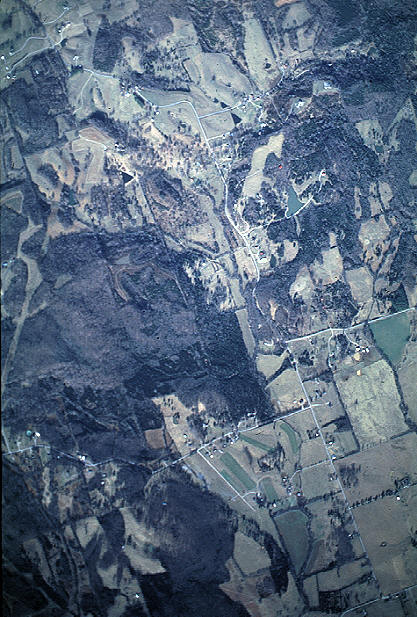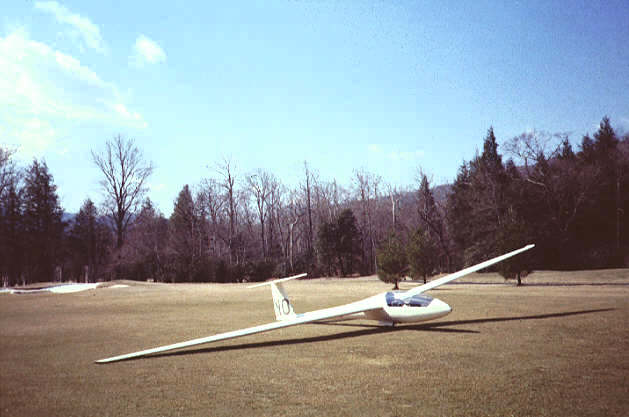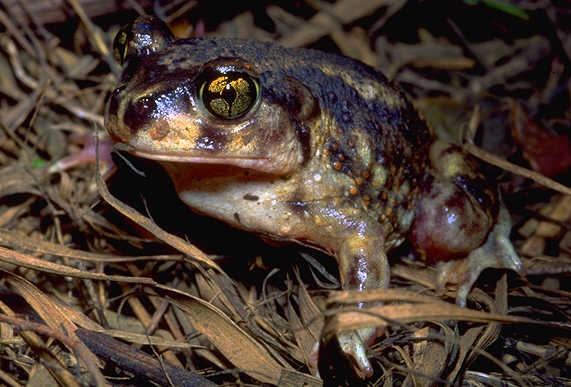|
Back
Flying "Was that the last
photograph?"
"Yep." We are enjoying an eagle's view of the middle Tennessee countryside, 10,500 feet above sea level. The day is crystal clear this January afternoon, a perfect day for aerial photography. The winds were gusting across the runway on takeoff, but once in the air it's been a smooth ride. Heading south from Springfield, Tennessee, just west of Nashville at 7,000 feet, we felt like we could almost reach out and touch the Ashland City bridge across the Cumberland River. Cheatham Dam was easy to spot farther to the west. Finishing our photo run south of Bethesda, I bank the Piper Clipper to the east towards the little town of Eagleville, Tennessee. Just south of Eagleville is Puckett Field, a small grass airstrip used mainly by sailplanes. We will land there before heading home. I learned to fly sailplanes at Eagleville 27 years ago, and when the strip with it's long hanger comes into view it's like seeing an old friend. As we pass through 3,000 feet we fly over a group of Black Vultures circling in a thermal. Sailplane pilots have a different perspective on vultures than most people, I think. To fly cross country in a sailplane you have to know where the thermals, or areas of rising air, are. A sailplane is basically a solar powered machine. The sun warms areas on the ground that in turn warm the air above them. This warm air breaks away from the surface and rises to become a thermal. Both sailplanes and vultures circle in the thermals and are carried upward with the rising air. You make your way cross country by using the thermals like stepping stones crossing a creek. If you get too low before finding a thermal, you may have to land in a farmers field (and answer the seemingly inevitable question; "Wind quit on you?") Although sailplanes are equipped with sensitive instruments to let you know when you're flying into rising air, sometimes thermals can be hard to find. With some experience, you realize that vultures are much better at finding weak thermals than you or your instruments are. Not only are they experts in finding thermals, they seem to be able to find the very best thermals around.
The vultures, however, are experts. As I pulled beneath them, there it was; the first lift I had encountered for miles. I don't know what the vultures thought about the sleek long-winged white bird that joined them that day, but I felt very grateful for their expertise. With their help I made it home. There are two species of vultures in Tennessee, the Black Vulture and the Turkey Vulture. Turkey Vultures have a longer tail, hold their wings in a distinct dihedral ("V") and tend to teeter back and forth on their wings in soaring flight. They have a keen sense of smell (unusual in birds) and have been shown to be able to locate food by smell alone. At close range you can see the naked red head. Black Vultures have a very short tail, white patches on the wing tips, do not teeter much in soaring flight and have a distinctive rapid floppy wing beat. They locate their food mainly by sight. At close range you can see their naked black head. Of the two, I think the Black Vulture is the best at locating and using thermals. After stretching our legs at Puckett Field, we took off again. Climbing out, I saw the rate-of-climb meter suddenly surge and felt the old familiar "seat of the pants" feeling of a strong thermal lifting the plane upwards. I turned back into the thermal, not thinking about making the Clipper climb really, but just wanting to feel those sensations again. We made a single turn, leveled out and headed home.
Looking for Frogs and Toads in the Winter Sometimes people think that the frogs and toads of Tennessee spend the entire winter beneath the mud of a pond or buried underground. While some frogs and toads in Tennessee spend the coldest days in winter protected this way, they often are about and foraging during the warmer winter days.
One good way to find Bullfrogs and Southern Leopard Frogs in the winter at night is to hold a flashlight against your right temple with your right hand, and hold a pair of binoculars to your eyes with your left hand and slowly sweep around the edges of a pond. The close proximity of the flashlight to your eyes maximizes the eye shine from the frogs and the binoculars make the eye shine more visible. Upland Chorus Frogs, Spring Peepers and Wood Frogs are already calling in January. A good tactic for Upland Chorus Frogs and Spring Peepers is to go to a spot where you've heard large numbers calling the previous spring. It's important to pick the right night for your search. Driving back country roads (this is a two person job - one person needs always to be looking out for traffic) slowly at night during mild rainy winter nights is a great way to find frogs in midwinter. If possible, pick a night where the temperature at sunset is above 50 degrees Fahrenheit. In this way we've had January records of American Toads, Bullfrogs, Green Frogs, Southern Leopard Frogs, Spring Peepers, Upland Chorus Frogs, and even a Northern Cricket Frog. After heavy rains and violent weather, be mindful that Eastern Spadefoots can be about. We had a Eastern Spadefoot on a January night in 1997, after 4" of rain and a tornado that heavily damaged the Austin Peay State University campus in Clarksville. Let us know what you find!
|


